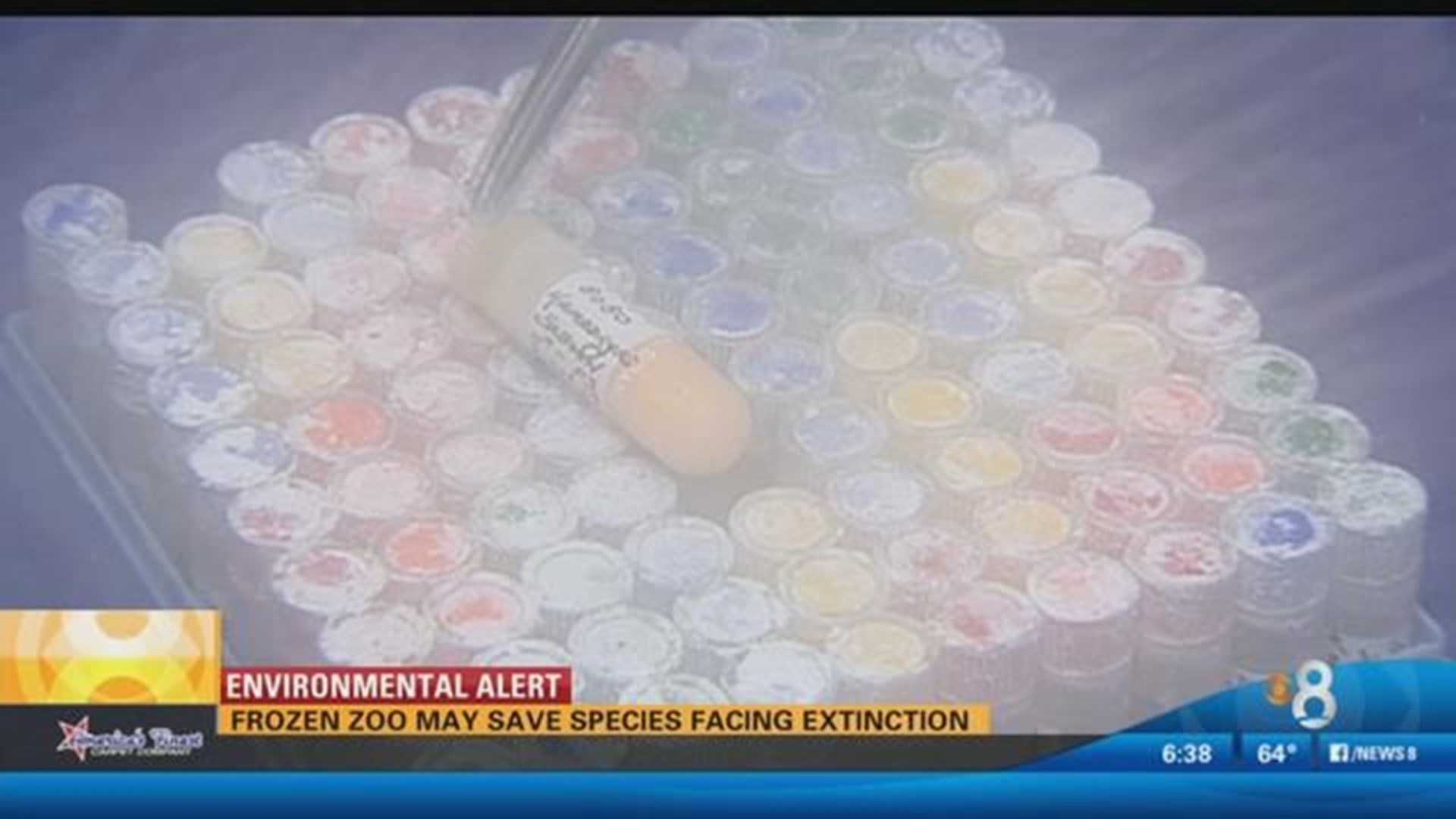Liquid nitrogen at 320-degrees below zero keeps cell samples from more than 10,000 animals frozen at the San Diego Zoo's Institute for Conservation Research. The institute is called the "Frozen Zoo."
"These are living cells. These are cells that contain complete genetic information of the individual they came from," said Dr. Oliver Ryder, Director of Genetics.
Skin and tissue samples, mostly from endangered animals, can be stored for decades, and scientists hope that one day, the cells can be used to produce stem cells for each animal.
"In order to make these cells into animals, we'd have to produce an embryo with them and that embryo would have to be transferred into a recipient," said Dr. Ryder.
Cells have been collected from 12 Northern White Rhinos, and worldwide, only five Northern White Rhinos exist. None of them can reproduce naturally.
"The only way to save the Northern White Rhino is with cells. That's actually been done, but been done with a mouse. So we have to learn to do it in Rhinos," said Dr. Ryder.
It may be five to ten years before a Northern White Rhino embryo can be implanted into a surrogate, Southern White Rhino.
The hope from scientists is that the same procedure can be used to save other endangered species.

